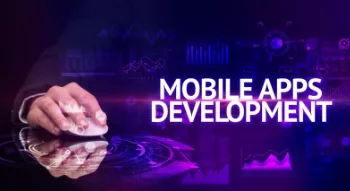In the dynamic world of project management, Agile methodologies have gained immense popularity for their flexibility and efficiency. Among the many Agile frameworks, Scrum stands out as one of the most widely adopted and effective approaches. It empowers project managers to deliver high-quality results, foster collaboration, and respond to changing requirements swiftly.
If you’re new to Scrum or seeking to enhance your Scrum skills, this step-by-step tutorial will guide you through the core principles, roles and responsibilities of effective project managers and artifacts of Scrum, empowering you to become a proficient Scrum project manager.
Understanding Scrum

Scrum is an Agile framework that focuses on iterative and incremental development. It originated in software development but has since been successfully applied across various industries. Before delving into the Scrum process, let’s familiarize ourselves with its essential components:
What is a Scrum Team?
A cross-functional team composed of developers, designers, testers, and other experts necessary to complete the project. It is a self-organizing and empowered group responsible for delivering the project’s objectives. This cross-functional team collaborates harmoniously, each member contributing their specialized skills to collectively deliver project outcomes. Empowered to make decisions, the Scrum Team is self-organizing, taking ownership of how they work and collaborating to achieve the project’s goals. Their shared responsibility encompasses delivering valuable increments, fostering innovation, and adapting to changing requirements throughout the development process.
Who is a Scrum Master?
The Scrum Master plays a pivotal role in facilitating the Scrum process and ensuring the Scrum Team’s productivity. Acting as a servant-leader, they enable the team’s effective collaboration, shield them from external disruptions, and eliminate impediments that could hinder progress. The Scrum Master promotes continuous improvement by coaching the team in agile practices, guiding them in refining their processes, and fostering a culture of self-organization and adaptability. By ensuring that Scrum principles are upheld, the Scrum Master contributes to the team’s efficiency and the successful delivery of high-quality increments.
Product Owner
The Product Owner represents the stakeholders and is responsible for maximizing the value delivered by the team. They hold the crucial responsibility of maintaining a well-prioritized product backlog, ensuring that it reflects stakeholders’ needs and aligns with the project’s objectives. Decisions regarding the features, functionalities, and enhancements to be included in each sprint’s increment are made by the Product Owner. With a deep understanding of customer requirements, market trends, and the project’s vision, the Product Owner acts as the bridge between stakeholders and the Scrum Team, guiding them towards creating a product that delivers the utmost value.
Product Backlog
The Product Backlog serves as the dynamic roadmap outlining all the work necessary to realize the project’s goals. It’s a comprehensive, ordered list of features, user stories, improvements, and tasks that collectively define the project’s scope. Maintained and refined by the Product Owner, the backlog evolves as the project progresses and requirements shift. Items are organized based on priority, with the highest value items taking precedence. The Product Backlog’s malleable nature accommodates changes and adaptations, ensuring the project remains aligned with evolving needs and market dynamics.
Sprint
A sprint is a precisely defined and time-boxed period, usually spanning two to four weeks, during which the Scrum Team dedicates their collective efforts to create a potentially releasable increment of the product. This focused timeframe encourages efficient work by establishing a clear and attainable goal. Sprints are characterized by their fixed duration and the commitment to delivering tangible progress, fostering a rhythm of iterative development within Agile methodologies like Scrum.
Sprint Backlog
The sprint backlog constitutes a crucial component of the Agile framework, specifically in Scrum. It encompasses a subset of the items from the larger Product Backlog, chosen by the Scrum Team. This selection represents the tasks, features, or user stories that the team commits to completing within the confines of the ongoing sprint. The sprint backlog serves as a dynamic blueprint that guides the team’s efforts, helping them remain focused and aligned with their sprint goal. As the sprint progresses, the team collaboratively works through the items in the sprint backlog, striving to deliver a valuable and functional increment of the product by the end of the sprint.
The Scrum Process: Step-by-Step Guide

Now, let’s explore the Scrum process in detail, outlining each step from project initiation to delivering the final product:
Project Initiation and Product Vision
Every successful project starts with a clear product vision. As the project manager, collaborate with stakeholders and the Product Owner to understand the project’s purpose, objectives, and expected outcomes. The Product Owner should articulate the product vision, and the team should align their efforts with this shared vision.
Creating the Product Backlog
In collaboration with the Product Owner, the Scrum Team creates the Product Backlog. The backlog consists of user stories, features, and enhancements that define the project’s scope. Each item should have clear acceptance criteria, which outline the conditions for the work to be considered complete.
Sprint Planning
At the beginning of each Sprint, the Scrum Team conducts a Sprint Planning meeting. During this meeting, they decide on the Sprint Goal, a concise statement that describes what the team aims to achieve in the upcoming Sprint. The Product Owner and Scrum Team work together to select the most valuable items from the Product Backlog and create the Sprint Backlog.
Daily Standup
The Daily Standup, also known as the Daily Scrum, is a short and focused meeting that occurs at the same time and place every day. It provides an opportunity for the Scrum Team to synchronize their efforts, discuss progress, and plan the day ahead. Each team member answers three questions: What did I do yesterday? What will I do today? Are there any impediments blocking my progress?
Sprint Execution and Incremental Development
Once the Sprint begins, the Scrum Team works collaboratively on the selected Sprint Backlog items. They use their cross-functional expertise to design, develop, and test the product incrementally. Continuous integration and regular feedback loops ensure that the product increment remains in a potentially releasable state at all times. This can also be done with agile project management software for ease of the managers and team.
Sprint Review
At the end of each Sprint, the Scrum Team conducts a Sprint Review meeting with stakeholders. They present the completed work and seek feedback. Stakeholders have the opportunity to inspect the increment and offer suggestions for improvement or changes to the Product Backlog.
Sprint Retrospective
After the Sprint Review, the Scrum Team holds a Sprint Retrospective meeting. This meeting is dedicated to introspection and process improvement. Team members discuss what went well, what could be improved, and formulate action items to enhance their performance in the next Sprint.
Key Scrum Artifacts
Throughout the Scrum process, specific artifacts play a crucial role in ensuring transparency and clarity:
Product Backlog
As mentioned earlier, the Product Backlog is a dynamic and prioritized list of all the work needed to complete the project. The Product Owner continuously refines and adjusts it based on feedback and changing requirements.
Sprint Backlog
The Sprint Backlog is a subset of the Product Backlog items selected for the current Sprint. It contains the tasks necessary to deliver the agreed-upon increment.
Increment
The Increment is the sum of all the completed Product Backlog items at the end of a Sprint. It should be in a potentially releasable state, meaning it meets the definition of “Done” set by the team.
Burndown Chart
A Burndown Chart visually represents the amount of work remaining in the Sprint Backlog over time. It provides insights into the team’s progress and whether they are on track to complete the Sprint successfully.
Adapting Scrum to Your Project
While Scrum provides a solid foundation for project management, it is not a one-size-fits-all approach. As a project manager, it’s crucial to adapt Scrum to suit the unique needs and challenges of your project and team. Some key considerations include:
Team Size
Scrum recommends teams of seven plus or minus two members. Depending on your project’s complexity, you may need to adjust the team size accordingly.
Sprint Duration
The standard Sprint duration is two weeks. However, some projects may benefit from shorter or longer Sprints. Experiment and find the optimal duration for your team and project.
Scaling Scrum
For large and complex projects, consider implementing Scrum at scale, using frameworks like SAFe or LeSS. These frameworks provide guidelines for managing multiple Scrum Teams and coordinating their efforts.
Hybrid Approaches
In some cases, a hybrid approach that combines Scrum with other methodologies may be more suitable. For instance, combining Scrum with Kanban can help manage support and maintenance tasks alongside new feature development.
Overcoming Common Challenges in Scrum
As with any project management approach, Scrum comes with its share of challenges. Here are some common hurdles project managers may face and tips to overcome them:
Resistance to Change
Introducing Scrum to a team that is used to traditional project management methods may be met with resistance. Ensure there is sufficient education and buy-in from all stakeholders to facilitate a smoother transition.
Unrealistic Expectations
Setting realistic expectations with stakeholders is crucial. Agile methodologies, including Scrum, prioritize delivering value incrementally, which may not always align with traditional deadline-driven approaches.
Incomplete Backlog Items
Poorly defined or incomplete Product Backlog items can lead to confusion and delays. Work closely with the Product Owner to ensure the backlog is well-defined and ready for implementation in each Sprint.
Over-commitment
Teams may struggle to complete their Sprint commitments if they overestimate their capacity. Encourage realistic commitment during Sprint Planning to ensure achievable goals.
Ineffective Communication
Communication breakdowns can hinder project progress. Foster a culture of open and transparent communication among team members, stakeholders, and the Product Owner.
Conclusion
Mastering Scrum as a project manager is a journey that requires dedication, collaboration, and continuous improvement. By embracing the core principles of Scrum, understanding the roles, ceremonies, and artifacts, and adapting the framework to your specific project needs, you can unlock the full potential of Agile project management. Remember that Scrum is not a rigid set of rules but a framework designed to empower teams to deliver value, foster innovation, and adapt to changing requirements effectively. Embrace the spirit of Scrum, be open to learning, and continuously refine your approach to lead your team towards successful project deliveries.
Get in touch with us today to build an app that becomes your brand identity.



